It is indeed a time of many “first times” this season: My own new boat arrived and that makes it one highlight after another. That is valid of course for myself as the new owner and proud skipper as well as for my family. GEKKO was and still is a boat that I consider a family´s gadget: I want to spend time aboard with my two kids, make them feel at home and create a safe, fun and exciting environment in which we can have quality time as a family. Now, naturally, as they aren´t professional boat kids yet, I need to bring them close to life aboard and sailing. Step by step, no hurry, no pressure – and here is how we spent our first ever weekend aboard, maybe you, as a oung sailing family starting to sail as well, can draw some hints out of this.
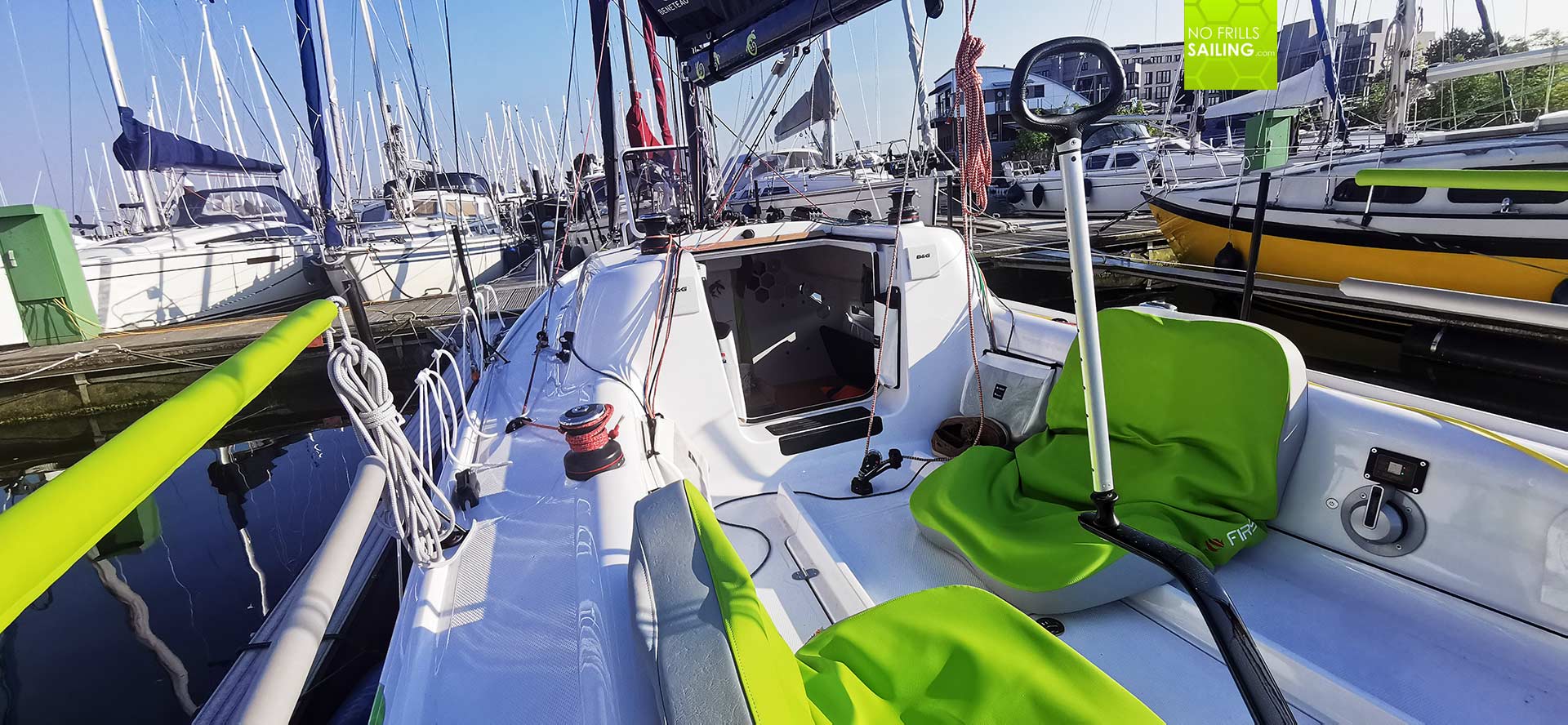
By the way, of course I won´t show the faces of my boys as I do respect their privacy – please do not wonder why they always “hide” their faces or why I choose strange angles for the pictures, I simply won´t show them unless they are aware and can judge by themselves if they want to be shown or not. So, let´s jump on board our boat and see how we made it the first time. It was a gorgeous weekend: Almost no clouds, sun was brightly shining and temps around 25 degrees Celsius. Perfect for a summer weekend.
Building up confidence in the Boat
We arrived Friday afternoon after I collected the oldest from school and the small one from Kindergarten. They were so excited to be aboard again: As you may know, my first step to “attach” the kids to the boat was my decision to let them decide how the boat might be named GEKKO was their idea, so, in a way, it is their “project”. We loaded our provisions, clothing and gear aboard and after some two hours drive in a hot car (including the inevitable traffic jam on the Autobahn) we simply made ourselves comfortable: Short trusers, simple undershirt (and sun blocker). Calming down.
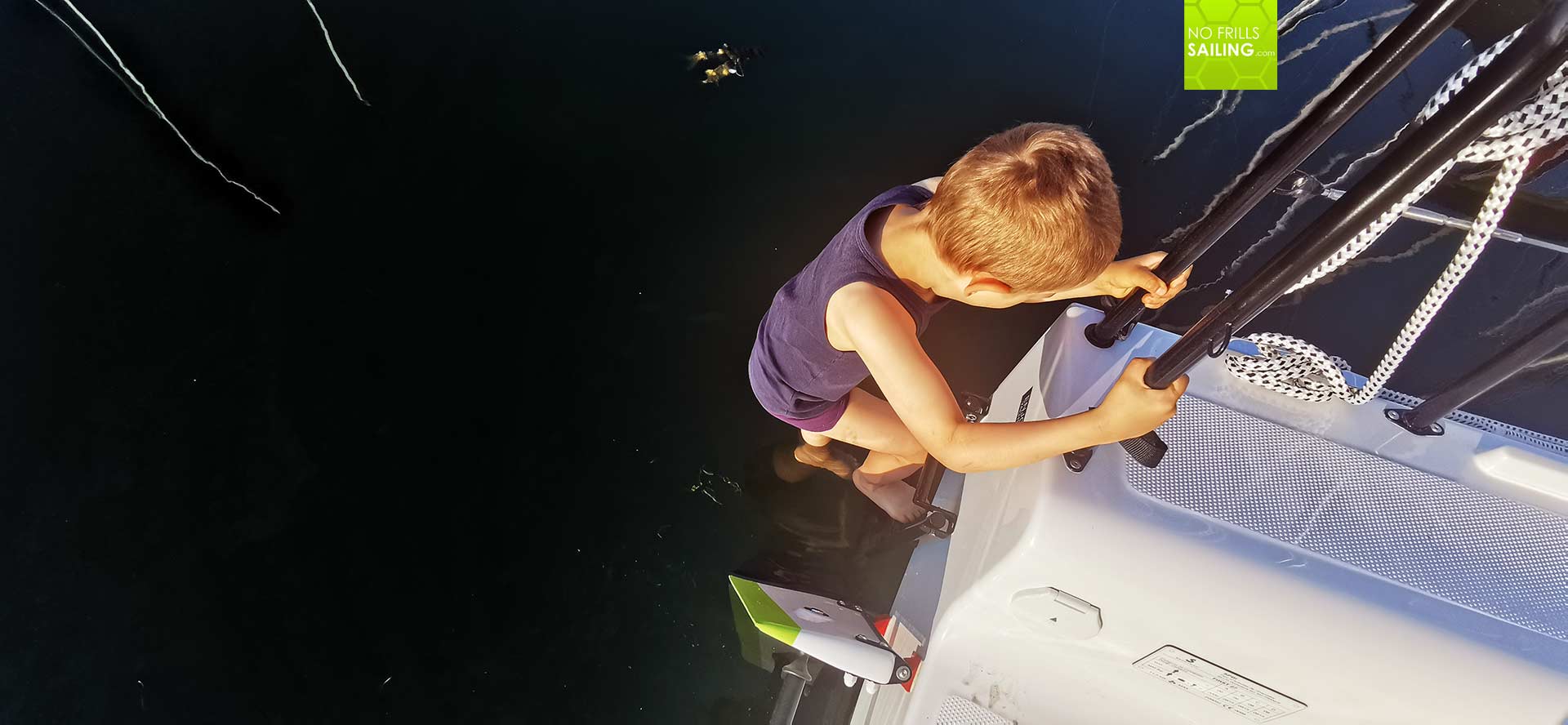
„Can we sail? Can we sail?!?”, my kids shouted and I was happy that they´d be so keen on going out, but I reckoned that this would be overkill after a hustling day like this. Instead, I suggested, we would have a little bathing fun for some cooling down. They agreed. My intention was clear: In essence swimming and bathing an anchoring will be an activity we are going to practice many, many times aboard. So “teaching” my kids how to go in the water and come out safely using the bathing ladder is essential.
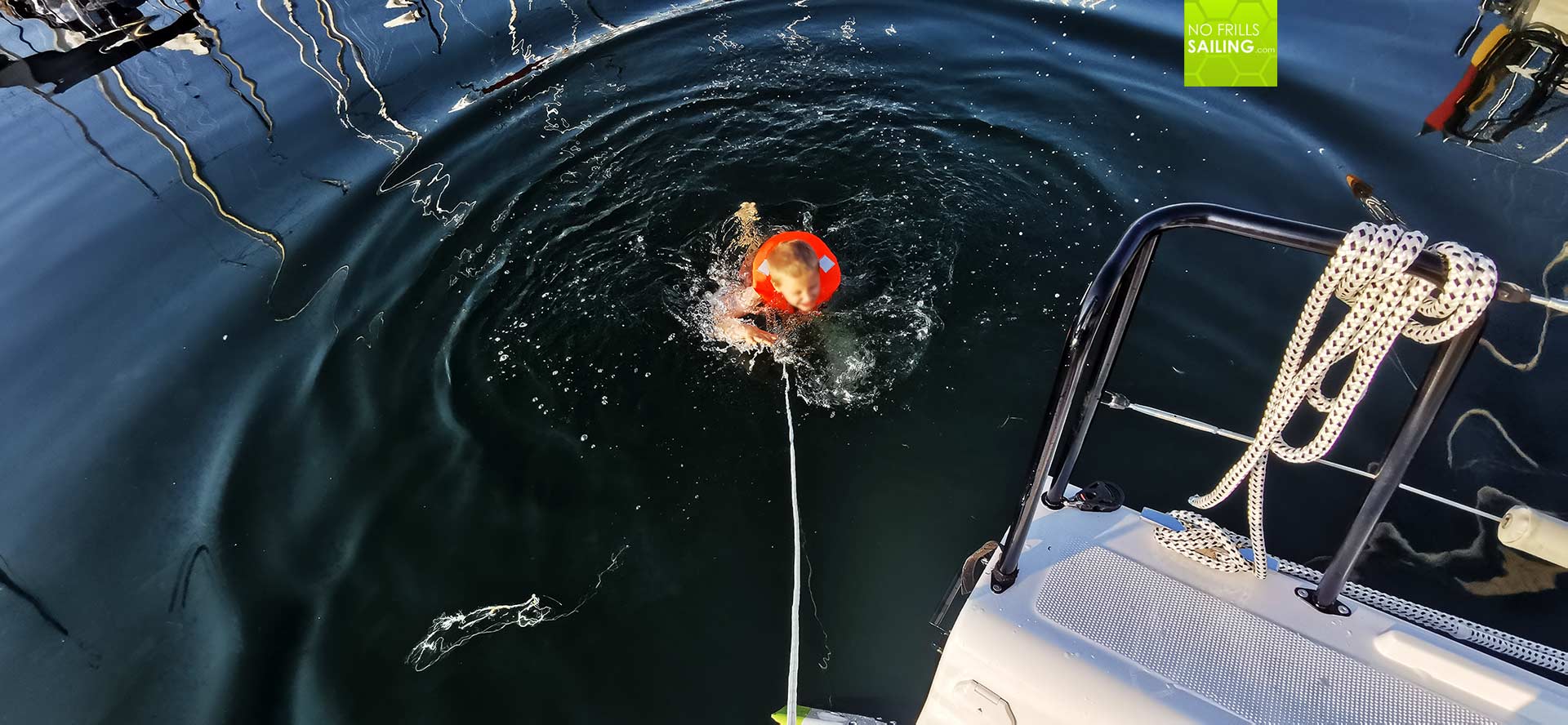
Both climbed down the ladder and “practiced” utilizing the ladder many times over: Not that I wanted them to originally but because the water was a bit chilly (14 degrees Celsius). After I judged they were safe at the boat´s stern and able to go off and on the boat via ladder, I made them wear an old life jacket (not the new automatic ones of course) and attached a line. In this, both could have a little splashing fun in the water. Best lesson for my small boy, who hasn´t been teached to swim yet: By wearing a life jacket he experienced not to have fear of water. The jacket will hold him up on the surface. Big fun, bright smiles and loud hollering of the kids!
Step by step: No overpush
Although I have only 2 semesters of Pedagogics finished when I was a young student, I won´t call myself a professional. But as a father since 8 years I know that kids need to make their own experiences and that pushing an agenda all too hard often results in refusal and frustration – first with the kids, then with the parents. I don´t want to overpush and destroy their fun at worst. Making them feel comfortable and fun is first priority.
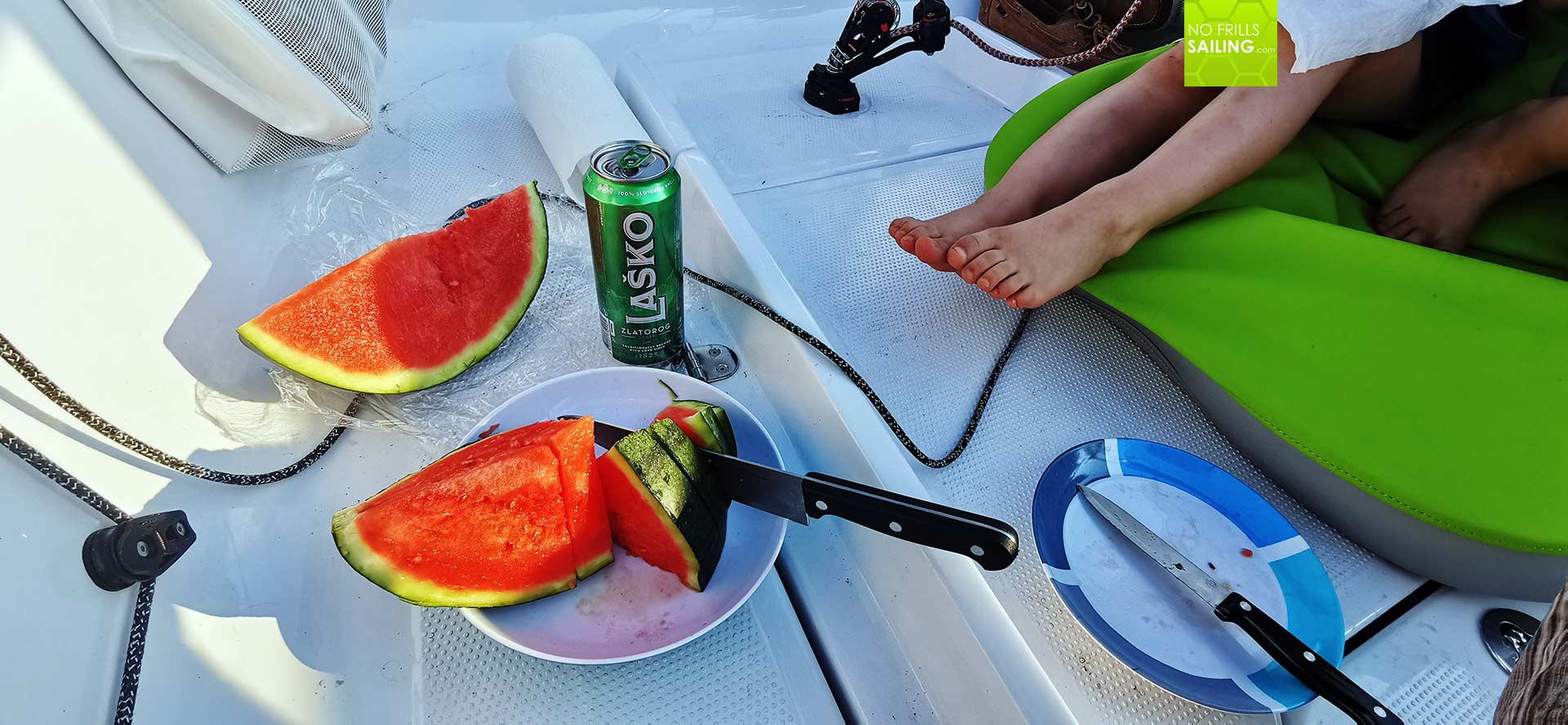
That is why, after the swimming action, I suggested we´d make a little pause, calm down, enjoy the warmth of the sun and feast off a big, sweet and tasty watermelon. To which they happily agreed: Alternating the exciting stuff with periods of calmness and relaxation. As we munched on the crunchy, sweet and tasty chunks of fresh fruit, I used the time to contemplate and repeat: “Do you guys still know what we do when we prepare to cast off?”, I asked. And like a waterfall, my boys came up with what they had learned last time when we checked on the life jackets.
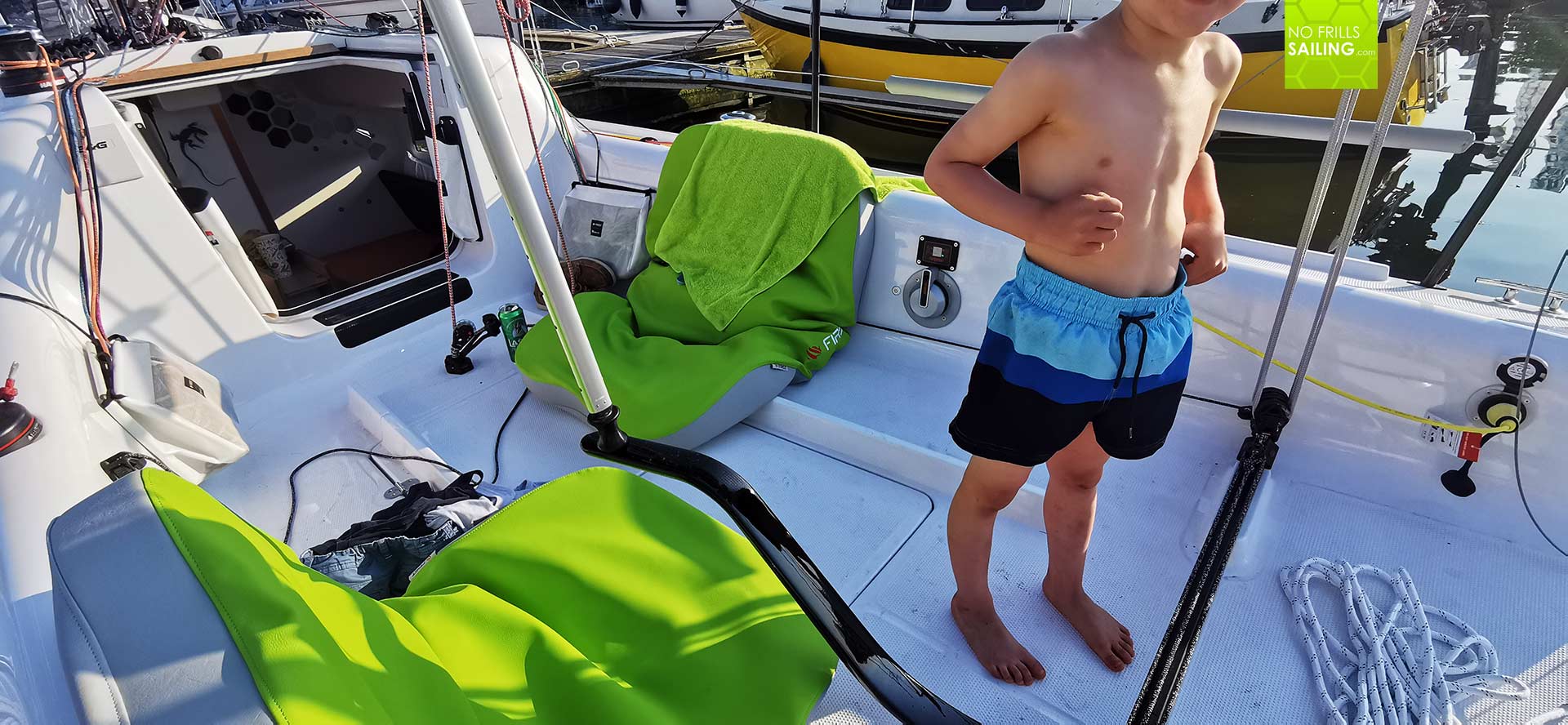
This is basically how I do it: Going small steps, one at a time. I teach them by showing them new things, by letting them experiencing by themselves and have them make their own mind about it: Instead of just explaining, I let them try. Let them do it, let them find out for themselves. I would say that this learning-by-doing is a) most fun and b) will create more self-confidence and experience. In this, we let this first day, which of course was just half a day, slowly draw to an end.
First night aboard: That´s fun!
Preparing for bed is never fun for kids. They are boasting with energy and usually do not want to sleep. Well, it´s summer, it is bright daylight up until late in the night and we have weekend. So I announced: “There is another new rule: If we are on board GEKKO, you guys can stay up as long as you want!” Big eyes: “As – long – as – we – want?”, the asked sceptical in disbelief. I re-assured. They can stay up as long as they want. The pressure was off. The funny thing is: No matter which rules, they will fall asleep. Because we are outside, at the fresh air, jumping around, because everything is so exciting – that is going to happen sooner than at home.
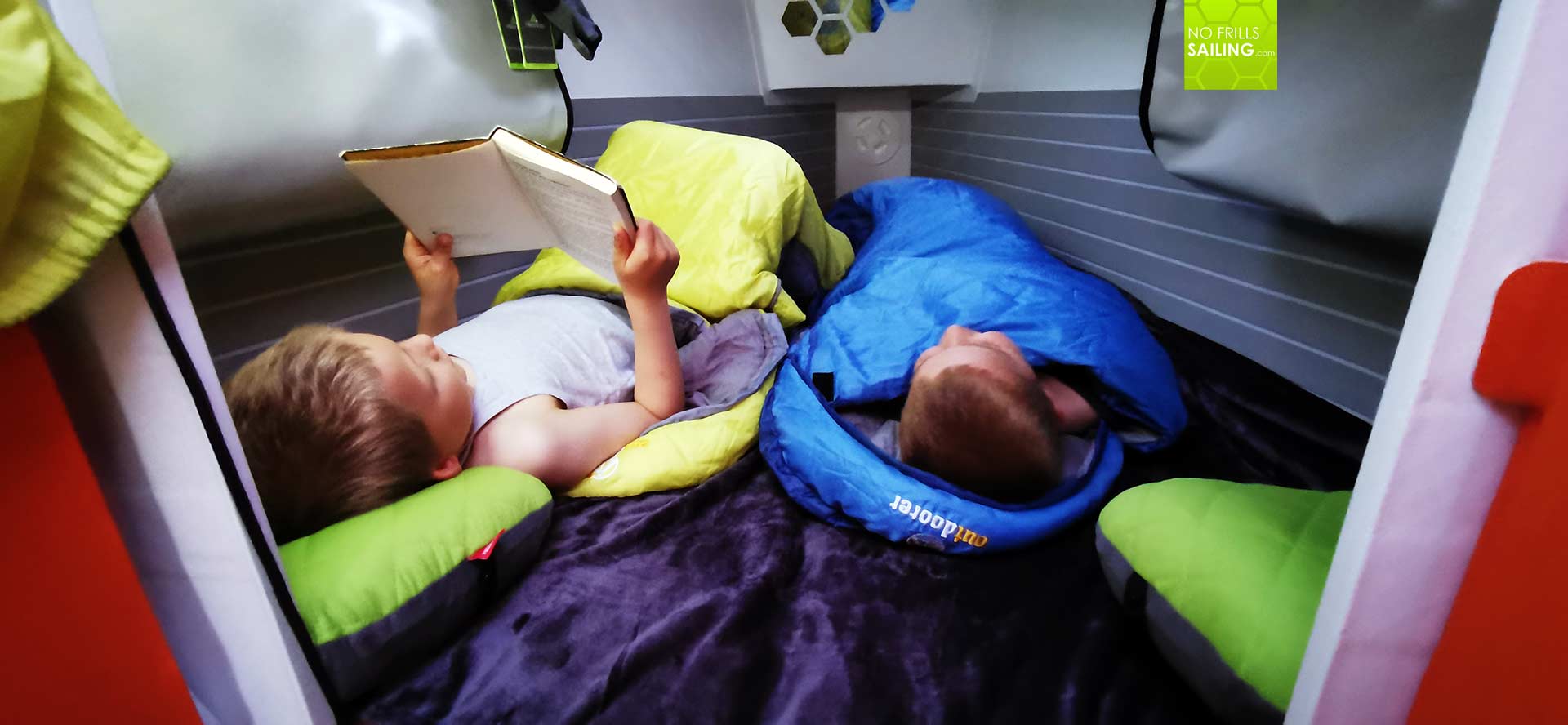
Another thing I do make my kids feel comfortable on board: I create a safe environment which they can accept as “theirs”. One of which is the fore cabin where, as long as I have them aboard, they have their bunks. Nice and cozy sleeping bags, a fluffy blanket and a hatch to see the stars. After brushing teeth (which is great fun spitting overboard) and getting ready, they climbed into their adventurous bunks and just two pages of their good-night-story later, both where happily snoring, sleeping tight and through the night.
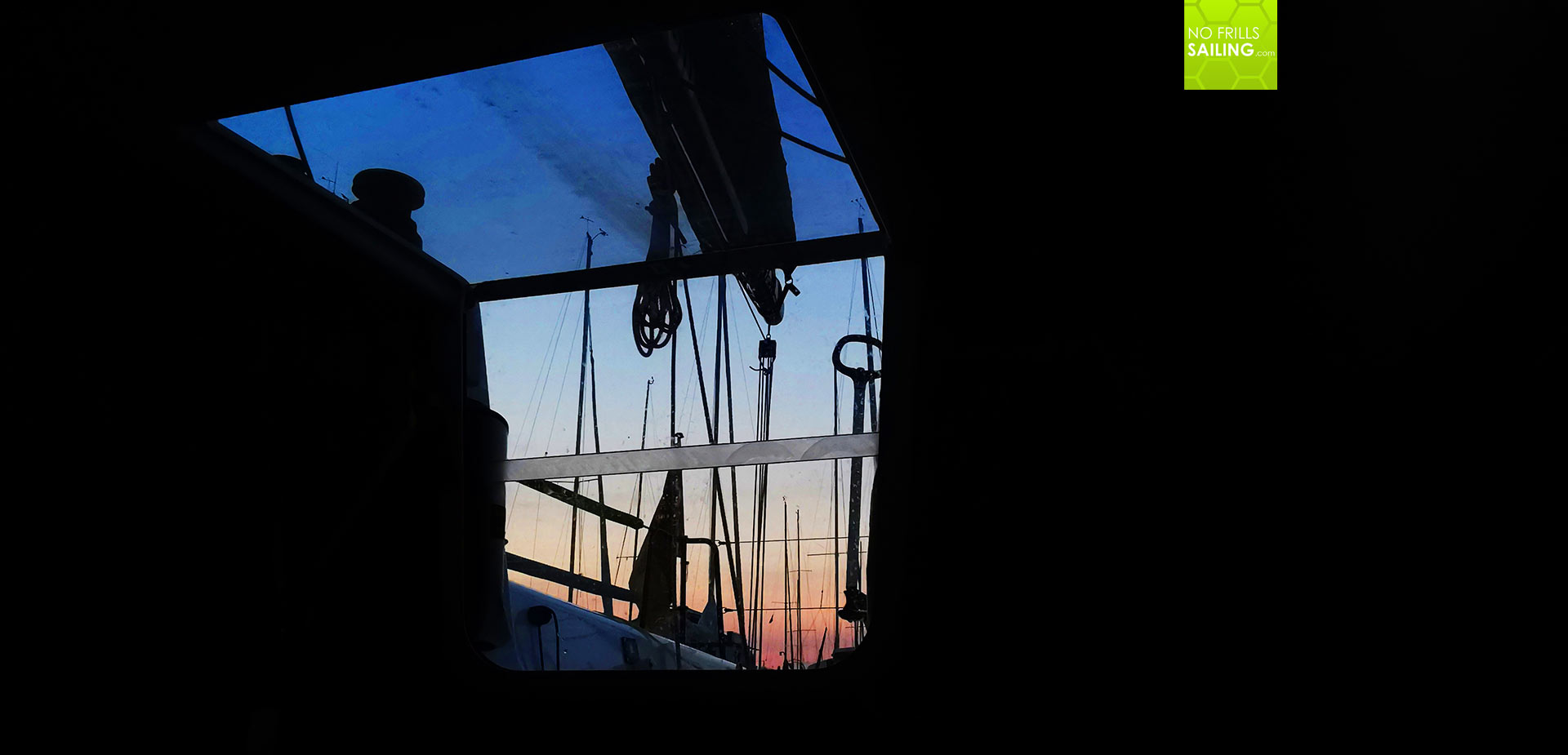
It´s always such a rewarding pleasure to watch your own children sleep. So innocent, so cute! Especially in a boat that is always slightly moving, gently teetering in the see-saw of the harbor´s swell. I can see it at myself how much better I can sleep when aboard a boat. Same with kids: The nice sound of the air rushing by, some distant clunker of lines on a mast, seagulls screeching and a bell ringing. Minutes later it was me who sank down into the sleeping bag as well, dreaming myself away.
Now we can go out: Sailing Action!
Next morning, waking up in a chilly boat, I switched on the portable electric heater and sunk back into my bunk: my kids still asleep, peacefully snoring and wildly entangled in each other. Is there a sweeter look onto kids possible than when they are asleep? Normally, at home, the kids would be first to get up and start the craze of the day, not so on the boat. One hour later we sat at the small dining table, they´ve had their morning cereals and I enjoyed the hot cup of coffee. “Today we will be out sailing”, I announced and their pleasant anticipation grew even bigger: At last!
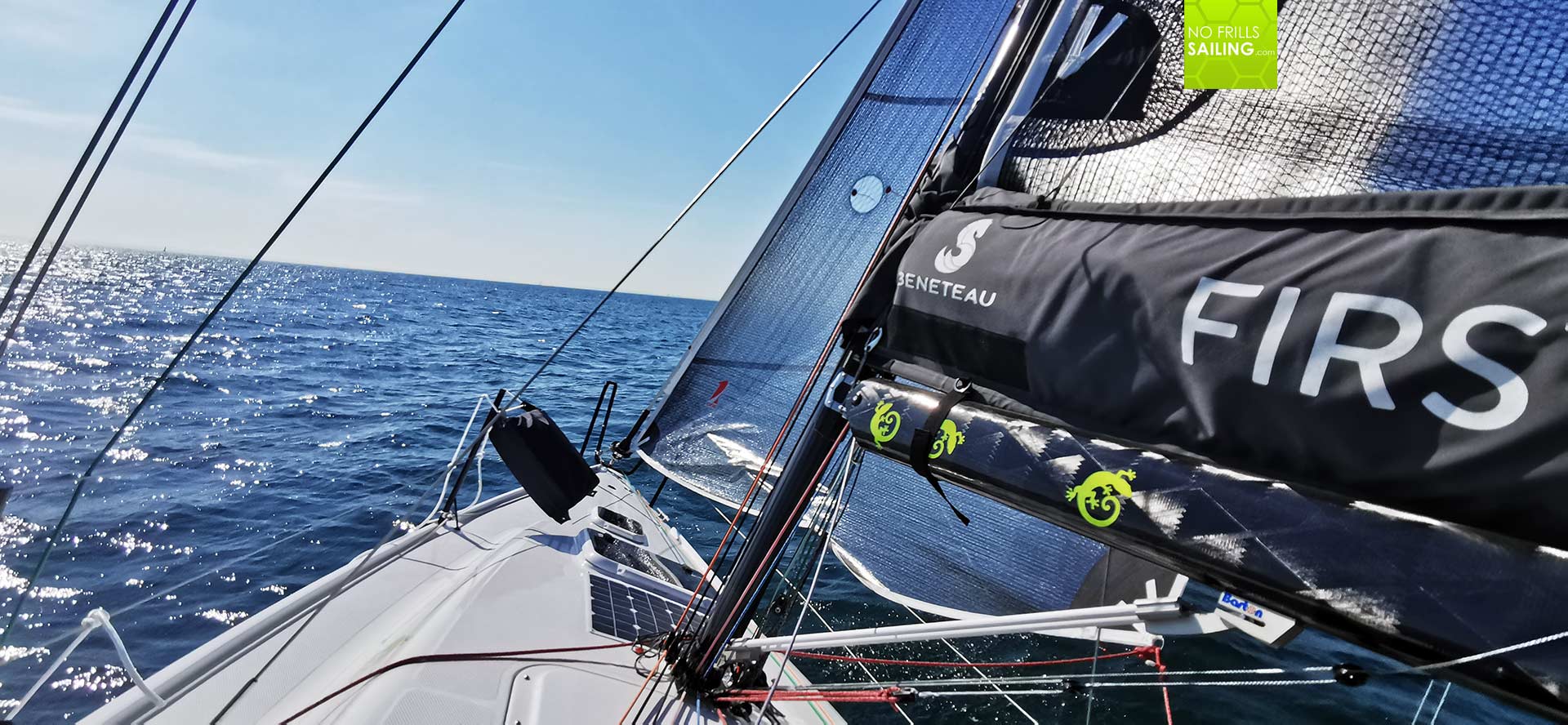
So when should you go out with your kids if they aren´t accustomed to sailing? Well, of course when wind is not so strong. Children like adventures, at least mine, but they do not like them all-too seriously. In this, I figured, a wind of 6 to 8 knots TWS would be perfect: If too low, the boat won´t sail and there wouldn´t be any sensation about it. If too strong, too much heeling and stress, it´s no good either. That day was just above my self-set threshold: 9 knots. We went out.
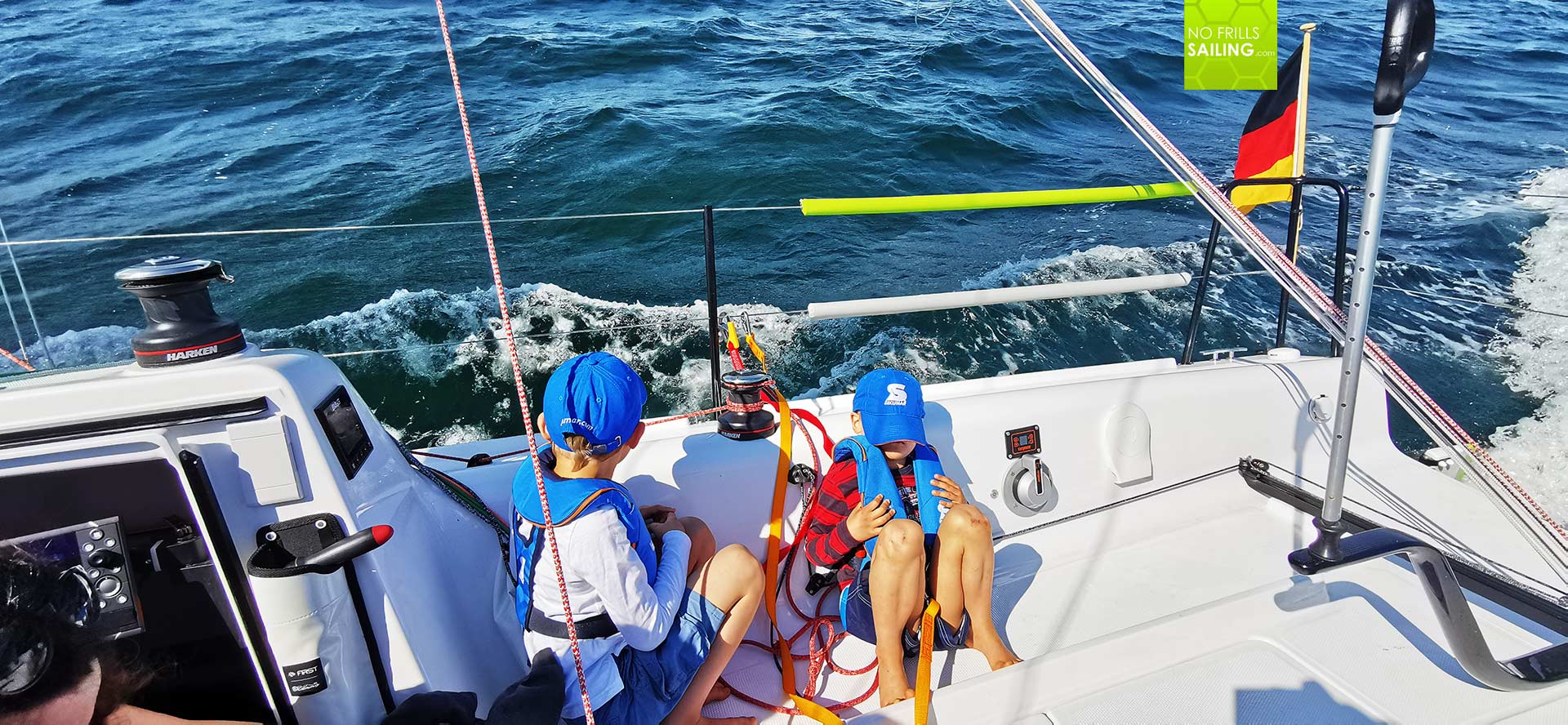
I put in the second reef in the main and we sailed on. It got pretty rough for a “first time” out there, 13 knots steady and gusts with up to 15 knots. The boat flew over the waves, planning of a Seascape 27/First 27 starts at 7.5 or so knots and GEKKO went off. I carefully had an eye on the kids how they reacted to the “strong” wind, but they seemed to have fun: My excitement about the planning state of the boat somehow leapfrogged to them: They joined me in hollering of joy.
Let them try things out
I meticulously watched the kids, mostly because I wanted to make sure that they are safe all the time. As I had trained in harbor previously with them, they of course had to wear their automatic life jackets – as well as I did wear mine – and like and umbilical cord had their tethers attached to the stanchion of the reeling. Always searching for a wind-chill protected nice place to sit down in leeward, the boys watched the seas fly by. Now that they felt safe and had fun, I tried the next step.
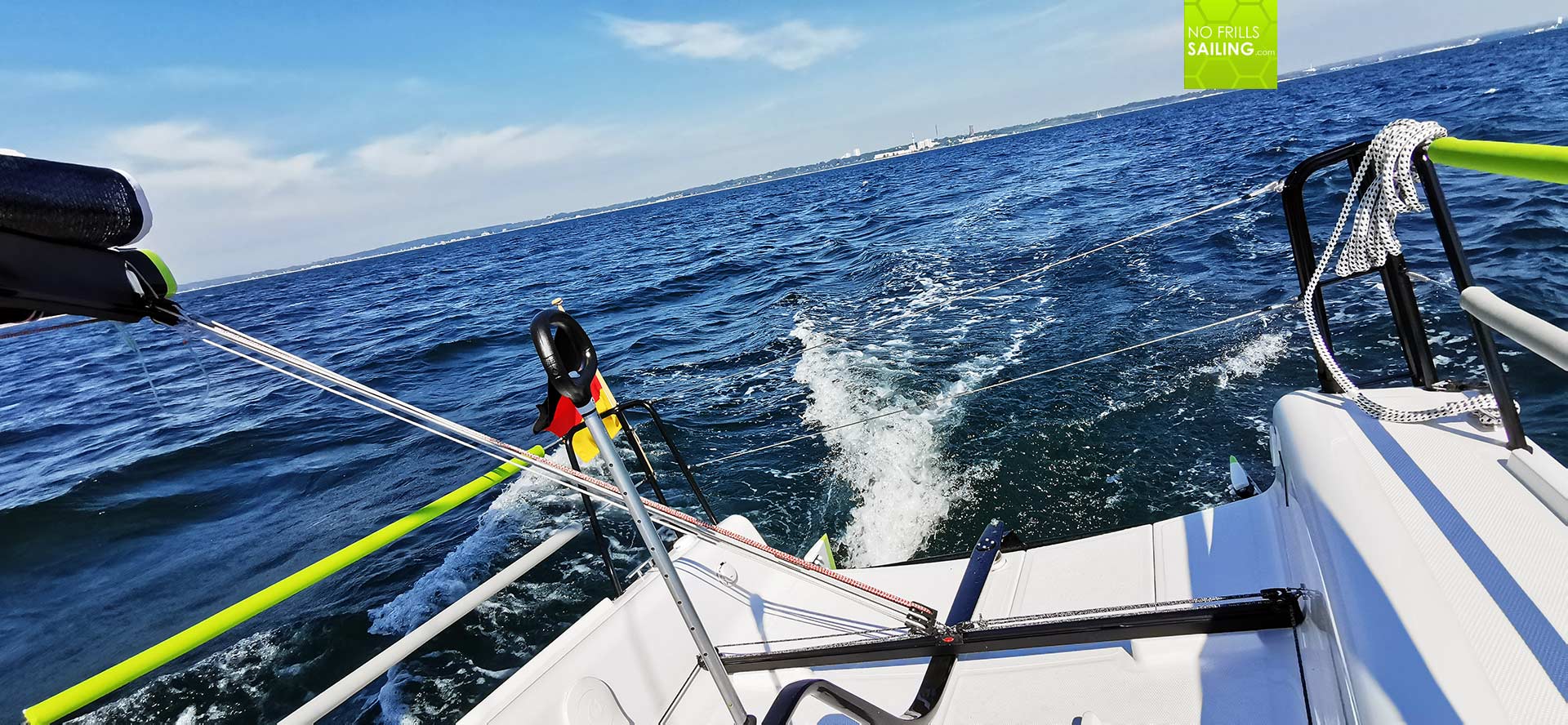
I regularly explain things on the boat, in harbor, at home or now, at sea. Like the lines: “Hey, who knows which line adjusts the mainsail?”, I asked the two. The mainsheet of course. So, I gave the boys the mainsheet and let them ease it. As the sail veered off the wind, the boat´s heeling stopped, we lost speed and came upright. Big eyes. “Now, pull the sheet and get the sail into the wind again.”, I asked the boys. After sheeting in the main, heeling returned as well as the speed. They smiled: “Aha! That´s how it works?!”
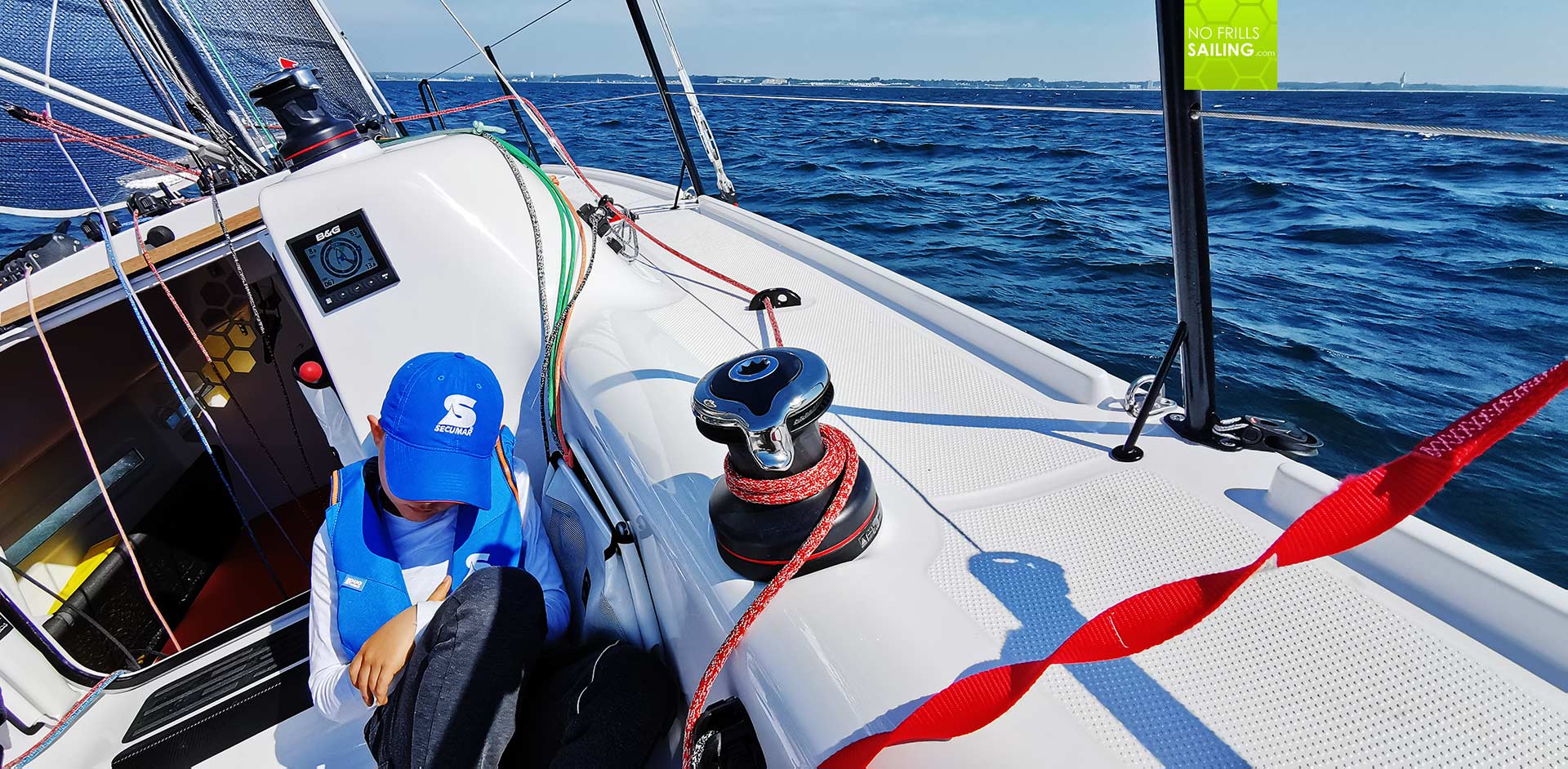
I actively included the kids into boatwork. As one of the boys asked what a nice thing I wore around my neck, I explained the autopilot and showed them. That brought us to the tiller steering which I made my oldest son take into his hands, switched off the electric helmsman and – again – let him try out what a tiller does. He veered away and luffed again, steering the boat through the waves which is not just massively impressive to a child helming a big boat like GEKKO but also great fun – having full control at a speed of 8 to 9 knots planning. We dashed one hour upwind and on a beam reach, I performed a tacking manoeuvre which they found great fun and downwind reaching back again.
Fostering happiness
The smaller soon fell asleep, which is a specialty of him. Even in my car he would be asleep soon as the constant sound and feel is lulling him to sleep instantly. My older son was awake and keen on seeing all he could. Going back to the harbor after some two hours out in the wind seemed appropriate: You shouldn´t overpace and sail all too long the first times as it will quickly become boring for the kids. Nearing our harbour I thought that we´d maybe incorporate a little “adventure” in out sailing trip – so I did not go back immediately to our berth, but, after taking down the sails, steamed upriver.
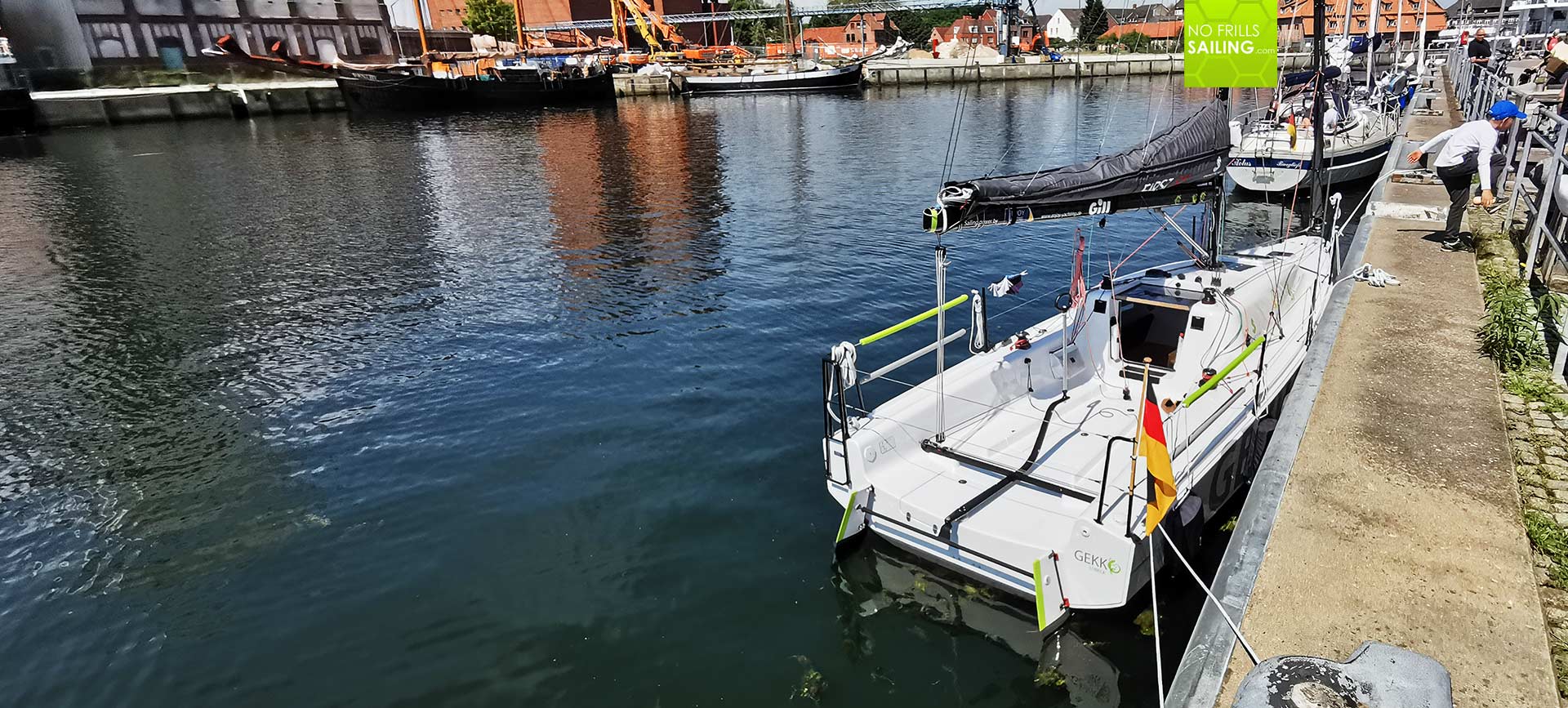
In pedagogics it is a simple technique to foster memories or newly learned things by setting a “marker”. Mostly that is a reward of some kind, a nice thing that boosts the kid´s self esteem and connects the latest learned things with a joyful and happy memory. In the case of my kids, and I thing that is valid for most children, that will be sweets, ice cream or chocolate. Now, slowly steaming upriver I let my kids steer the boat and I told them that we will land the boat like pirates in the old town harbor and rob the town in a daring assault on the local ice cream shop. A big “hooray” followed and my youngest son immediately was awake.
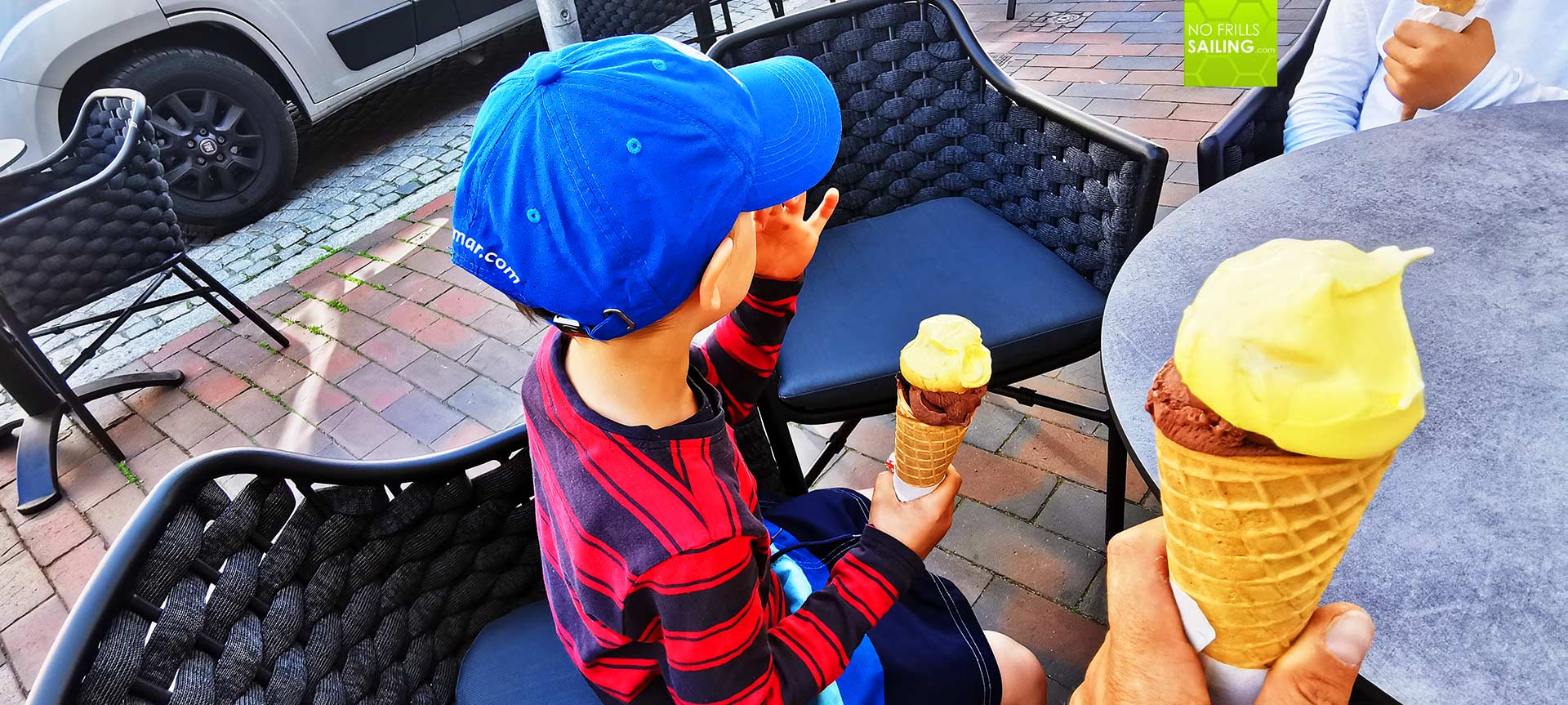
These little, seemingly unimpressive episodes are very important I´d say to making your kids love sailing: They see that in all the routine there is also always a chance to break out and make some cool stuff. Landing in the old town harbor alongside the waterfront that is full of cafés and restaurants is a very impressive occasion. As we tied up the boat under the eyes of those strollers and Latte-drinkers, the kids felt like being special: Little pirates. The big cone filled with yummie ice cream their reward for “behaving in a safe manner aboard”, as I stated (and repeated the safety instructions for the kids) and for my oldest son for his first duty as a helmsman. It can be so easy.
Make it slow – make it intense!
Back in harbor, after landing the boat, I looked at my watch and saw that this “little dash out” had nearly been a voyage of 4 hour all-in-all. That is a long time-span for kids that small. I eased the interference and after having the boat readied again, let the kids leave for the marina´s playground. Running around freely after being “confined” to a little space like a boat´s cockpit is important. The kids could go and have fun, wear off their leftover physical energy. In the meantime I prepared dinner.
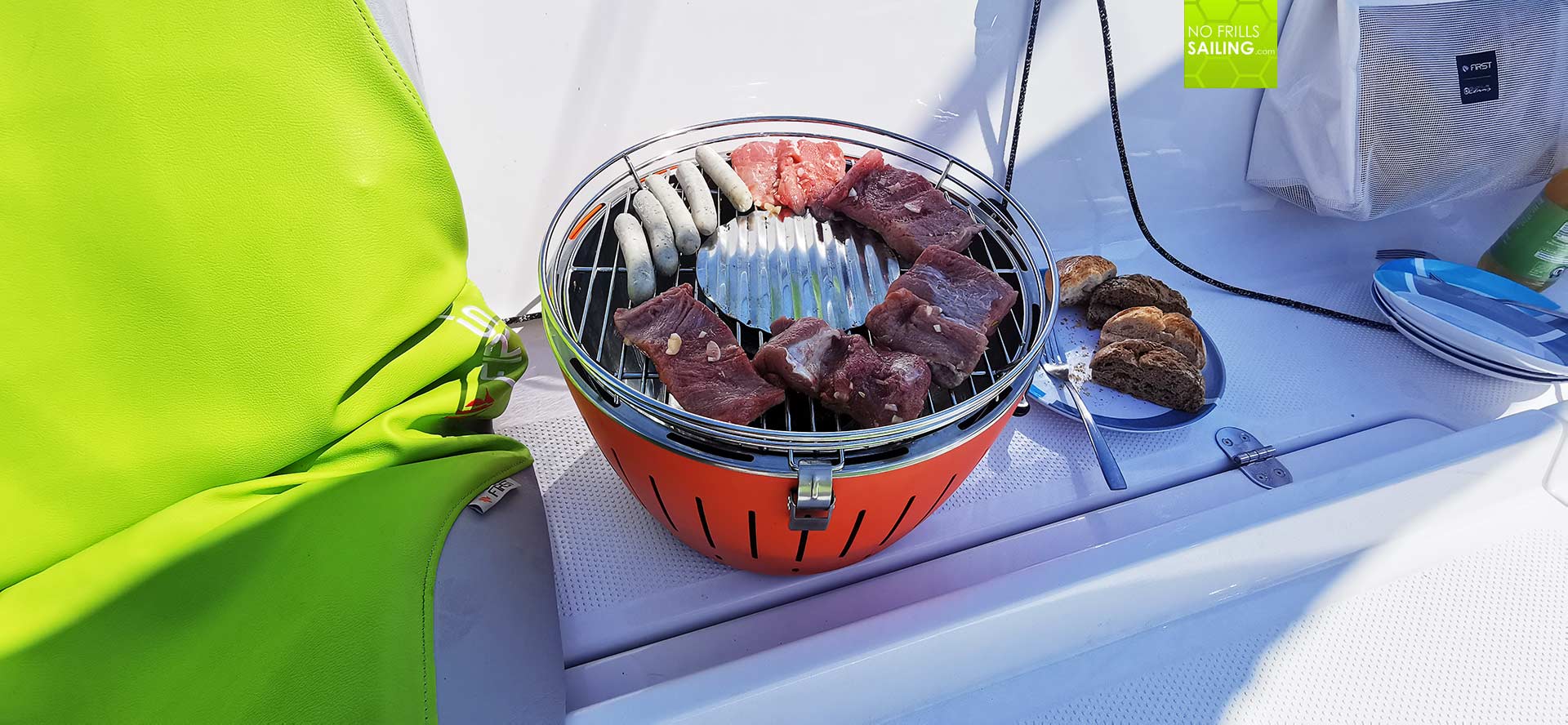
Again, keep it on the safe side. Introducing children to a new circumstance must be a well-balanced tactic between old, already known and beloved things carefully mixed up with the new stuff. As being on a boat – like camping on water – is exciting and new for the kids and shouldn´t be a problem for sailing parents, sailing itself might be: Heeling, the noise, the waves, the wind can be intimidating at times. By going out in low winds and having one reef more than usual at hand the risk of rejection can be reduced. Rewards foster good memories and connect certain events with a good feel. Having a tasty meal creates good feeling too: So I fired up the Lotus Grill – again a first time on my boat – and barbequed a nice chunk of filet.
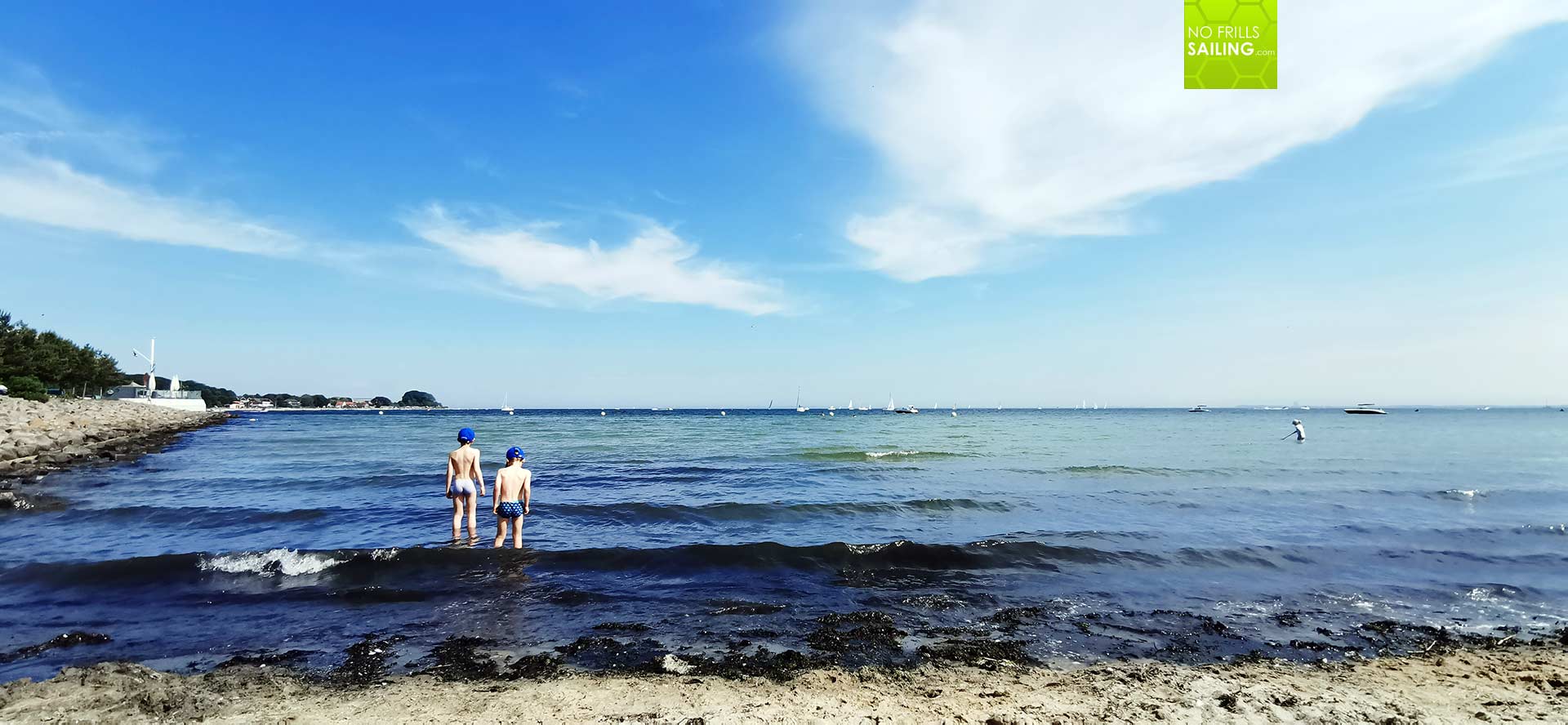
Sitting together in the cockpit whilst eating, I let the kids talk. Mostly – at least with boys – it´s like starting a waterfall to flow. The kids will endlessly re-capitulate the stuff they had experienced before. My smaller boy told me that it “was a pleasure to fall asleep in the sun on the boat” and smiled. My older son explained to me with joy in his eyes how “good it felt to steer the boat so easily with the tiller”. Learning by repetition: Sometimes all it needs is a warm chunk of meat in your stomach, a smile and a hint and the kids will do it themselves. After dinner we went to the shore – as it as hot as hell, I let them take a splash in the now calm waters.
Kids are part of the crew
For me it is important that children are not ballast aboard. They aren´t passengers either. I know that – at least that is valid for my kids – they will get bored very easily and start to tease each other, resulting in conflict and fights. So I consider even the small boys as an integral part of the crew. Being part of the crew means that I assign jobs to the kids – real jobs. For example, my oldest son learned and practiced to connect and disconnect the shore power cable. My younger son can operate the main switch panel of the boat and is “Safety Officer”, responsible for checking all crew members on wearing life jackets. I also created jobs just for the kids.
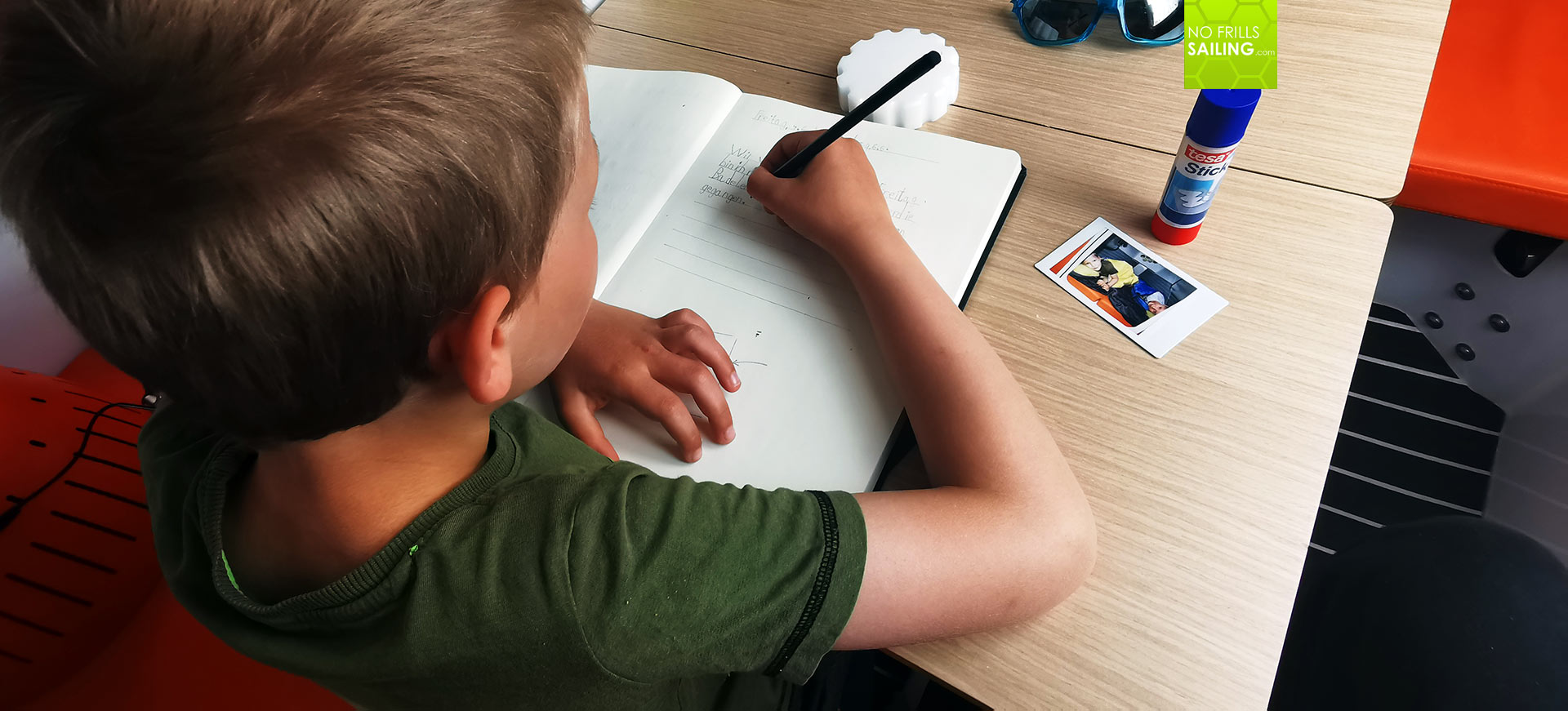
A nice idea is the “Kid´s Logbook”. After each day aboard GEKKO, just before we go to the showers and prepare for bed, I sit down with the boys and we talk the past day over. “What have we done today?”, I ask and let them talk. After both – in a loud hurly-burly – have listed the adventures of the day, I do dictate the log entry to my son. He is in first grade school and just learned to write: His logbook – and I mean his literally – is thus also a good way to do something for school. So he writes down a nice little text. You can imagine how proud he is, when we re-read the written and also turn over some pages to read older entries.
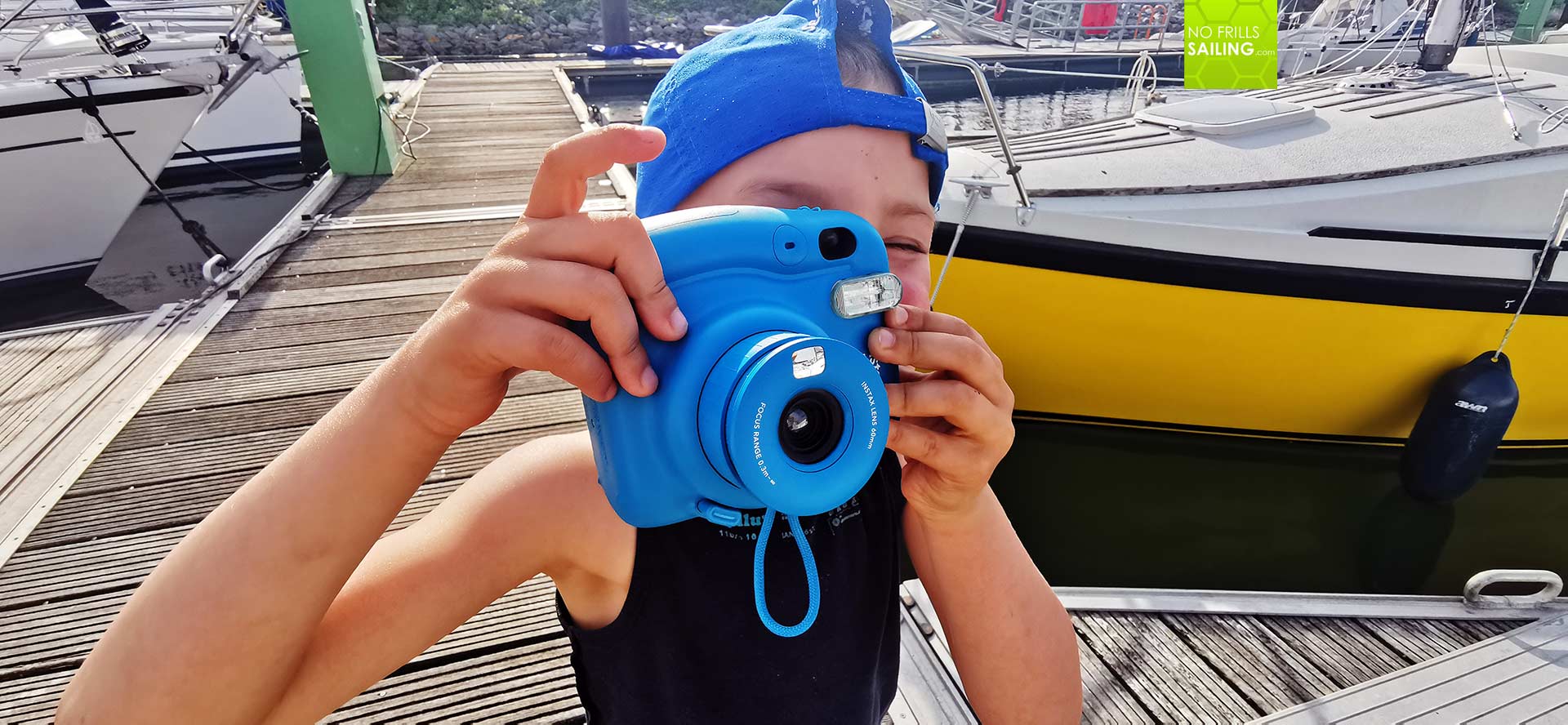
My younger son has the task to take the “Picture of the Day”. For that, I acquired a Fujifilm “Instax” camera, basically a Polaraid for kids. Easy to use, fail safe. I told him that there is a real film inside and that he has just one single shot per day. It is not like a digital cam or a mobile phone cam where we can shoot indefinitely and seek the best motive: Here my kid must decide on his own when to take which picture. It is something very special for him and he takes pride in this work: He can decide, he can direct, he can push the button. So my kid took us outside to take a photograph of his brother and his daddy in front of GEKKO. The “Picture of the Day” is then glued to the page in the “Kid´s Logbook”, I will take a snapshot by phone and post it to the family´s whatsapp group. Great for the gandparents too …
Getting your Kids excited for Sailing: My approach
Well, after the two boys fell asleep in a matter of minutes literally, I went outside to enjoy the last warm sun rays, opened a can of beer and had “my” moment of calmness and enjoying boat life. Thinking back to what has happened here before I felt happy: It was a truly fantastic sailing day and the weekend as a whole. No fear, no screaming, no boredom and no rejection. The kids had fun, they love the boat, they really enjoyed sailing outside and will connect sailing to sweet ice cream and bathing fun.
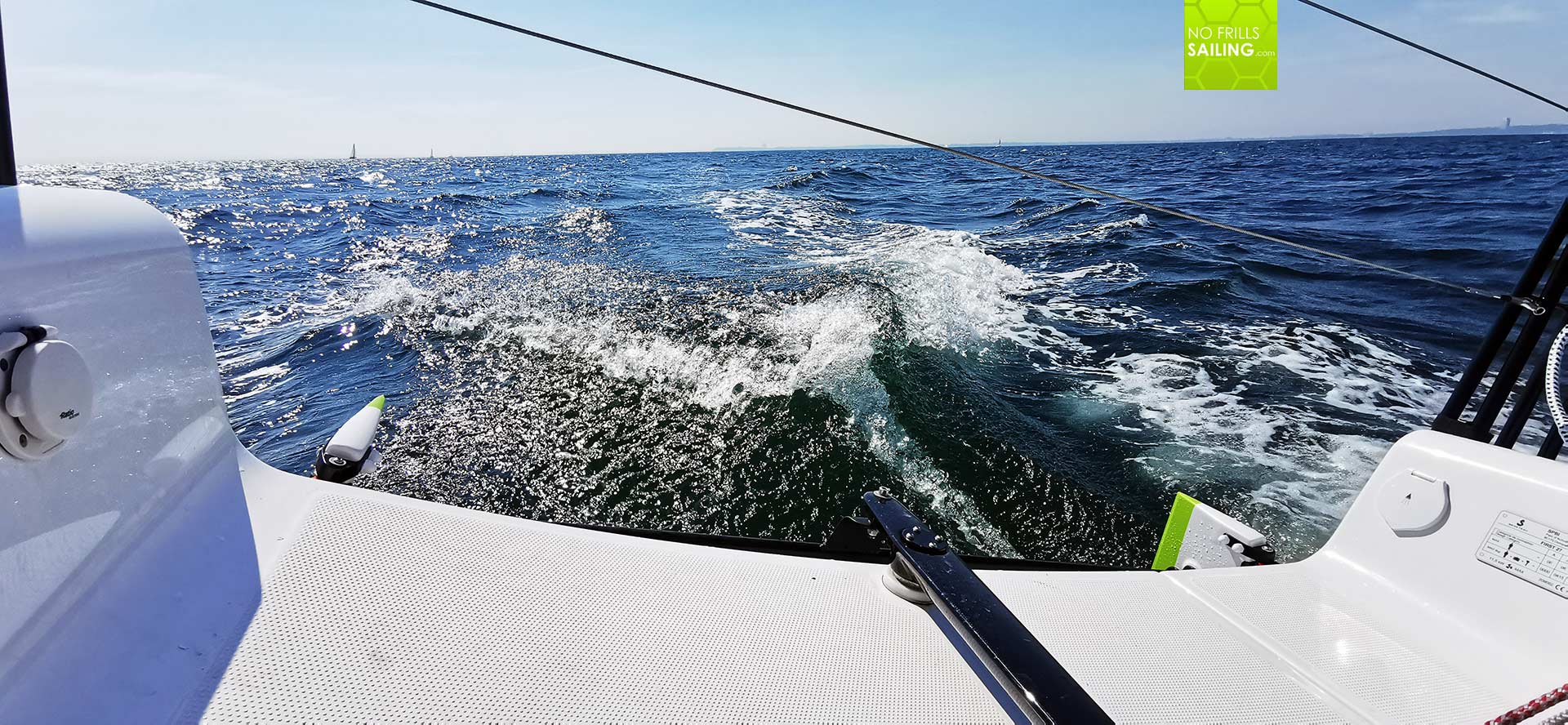
In this, my strategy of taking one step at a time, have it slow and steady, works. Repeating the already learned and fostering newly learned stuff by rewards is a good way of keeping up a good spirit and creating nice memories. That is motivation for a “next time”. By switching from a loose, let-go attitude to assigning real “jobs” to the kids I show them responsibility and motivate the kids to feel like being a real integral part of the crew. Creating something which only they have – the “Kid´s logbook” and the Polaroids – the have their own domain where the adults at most just oversee the “how”, but not the “what”. Back home, days after the weekend, they still have sparkles in their eyes when they talk about our first sailing weekend on GEKKO. “It seems you have done everything right”, I compliment myself and smile as well.
You might like to read these articles:
All “Sailing with Kids”-articles
First Aid for kids over board
How it´s made: Life Jackets for Children
